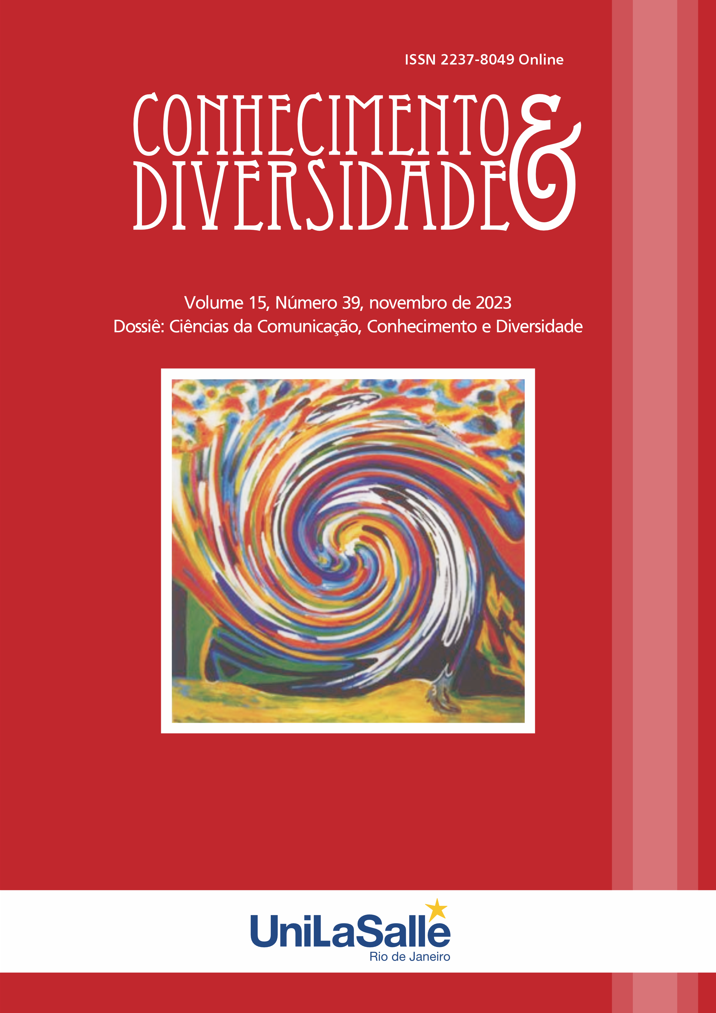THE MEDIATED PEDAGOGICAL COMMUNICATION
ASSETS AND CHALLENGES IN THE LANGUAGE CLASSROOM
DOI:
https://doi.org/10.18316/rcd.v15i39.11126Keywords:
Pedagogical communication, Mediated teaching, Authentic learning, Roles of teacher and learnerAbstract
The socio-educational transformations experienced by the world during and in the aftermath of Covid-19 have called for new professional thinking, a high degree of mobility for digital tools, an orientation towards the implementation of processes for the socialization and professionalization of the individual, and the humanization and democratization of the pedagogical process. Indeed, schools are called upon to adapt and rethink their structure and practices to enable individuals to fulfill their current and future roles in society. In this respect, a person's professional and social achievements largely depend on professional skills and communication skills in particular. Communication skills are important competencies for actors in action (teachers and learners). They ensure the fulfillment of pedagogical communication functions, the content of pedagogical activity and give an idea of the level of professional and communicative culture of these educational actors. The introduction of digital tools, whether courseware or online (platforms) in pedagogical communication, has generated new practices and a change in the teacher-learner relationship. In this paper, we will study the relationship between ICT and pedagogical communication in the post COVID-19 era, as well as the teacher (tutor) and learner relationship in mediated pedagogical communication in the language classroom. All this is based on surveys and research reports carried out in the Moroccan context.
References
Babni, A. (2019). COMPUTER-MEDIATED COMMUNICATION AND LANGUAGE EDUCATION: FOCUS ON WRITTEN COMMUNICATION. I-Manager’s Journal on English Language Teaching, 9(1), 50. https://doi.org/10.26634/jelt.9.1.14781
Bailly, S., Devitt, S., Gremmo, M.-J., Heyworth, F., Hopkins, A., Jones, B., Makosch, M., Riley, P., & Stoks, G. (2001). Cadre européen commun de référence pour les langues: apprendre, enseigner, évaluerGuide pour les utilisateurs. Conseil d’Ereupe.
Benhadda, H. (2022). LE NUMÉRIQUE AU SERVICE DE L’ENSEIGNEMENT DE LA LANGUE FRANÇAISE A L’ÈRE DU COVID-19. Akofena, 3(6).
CSEFRS. (2019). Enseignement au temps de COVID au Maroc. https://www.csefrs.ma/wp-content/uploads/2021/11/Résumé-Rapport-Enseignement-au-temps-de-COVID.pdf
Dewey, J., Learning, E., & Ord, J. (2012). Developing the theory of youth work. Youth and Policy, 108, 55–72.
Nguyen, L. (2008). Computer mediated communication and foreign language education: pedagigical features. International Journal of Instructional Technology and Distance Learning. http://www.itdl.org/Journal/Dec_08/article02.htm
Ollivier, C. (2018). Littératie numérique et approche socio-interactionnelle pour l’enseignement-apprentissage des langues. EUROPEAN CENTRE FOR MODERN LANGUAGES CENTRE EUROPEEN POUR LES LANGUES VIVANTES. www.ecml.at
Rosen, E., & Schaller, P. (2009). POUR UNE NÉCESSAIRE CONTEXTUALISATION DU CECR EN MILIEU HOMOGLOTTE. In Perspectives pour une didactique des langues contextualisée (Éditions d). https://bibliotheque.auf.org/doc_num.php?explnum_id=875
Weasenforth, D., Biesenbach-Lucas, S., & Meloni, C. (2002). Realizing constructivist objectives through collaborative technologies: Threaded discussions. Language Learning and Technology, 6(3), 58–86. https://www.lltjournal.org/item/10125-25177/
Downloads
Published
Issue
Section
License
Copyright (c) 2023 Abdelhafid Belahrache

This work is licensed under a Creative Commons Attribution 4.0 International License.
As recommended by the Public Knowledge Project, RCD adopts for its articles a CREATIVE COMMONS Attribution CC BY 4.0 license.
This license allows others to distribute, remix, adapt and build upon your work, even commercially, as long as they credit you for the original creation.
This is the most appropriate license offered.
Recommended for maximum dissemination and use of licensed materials.



